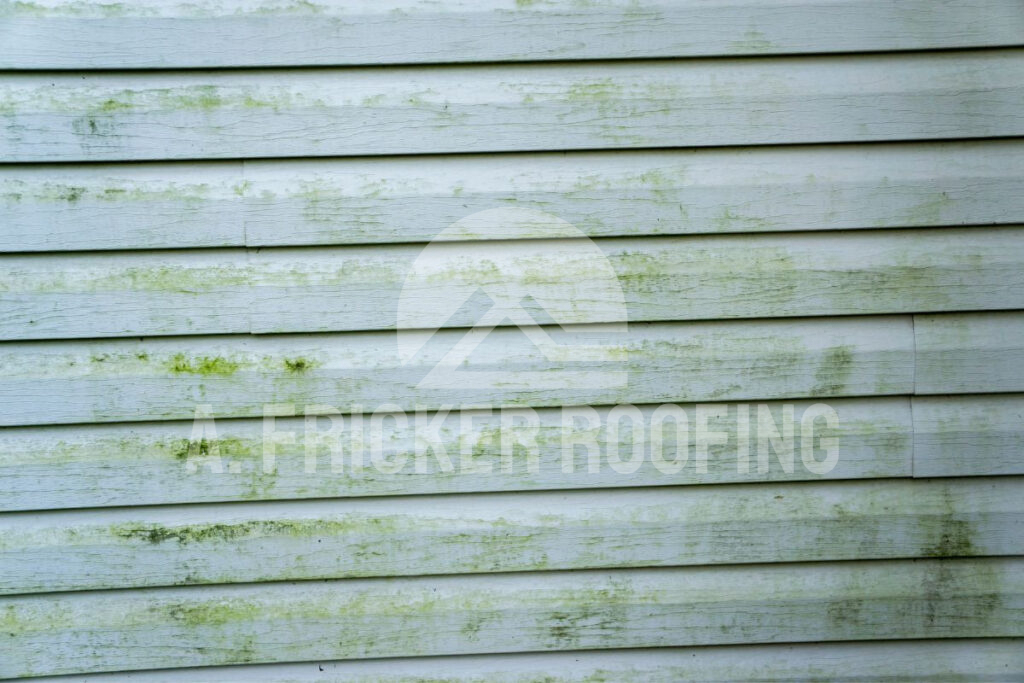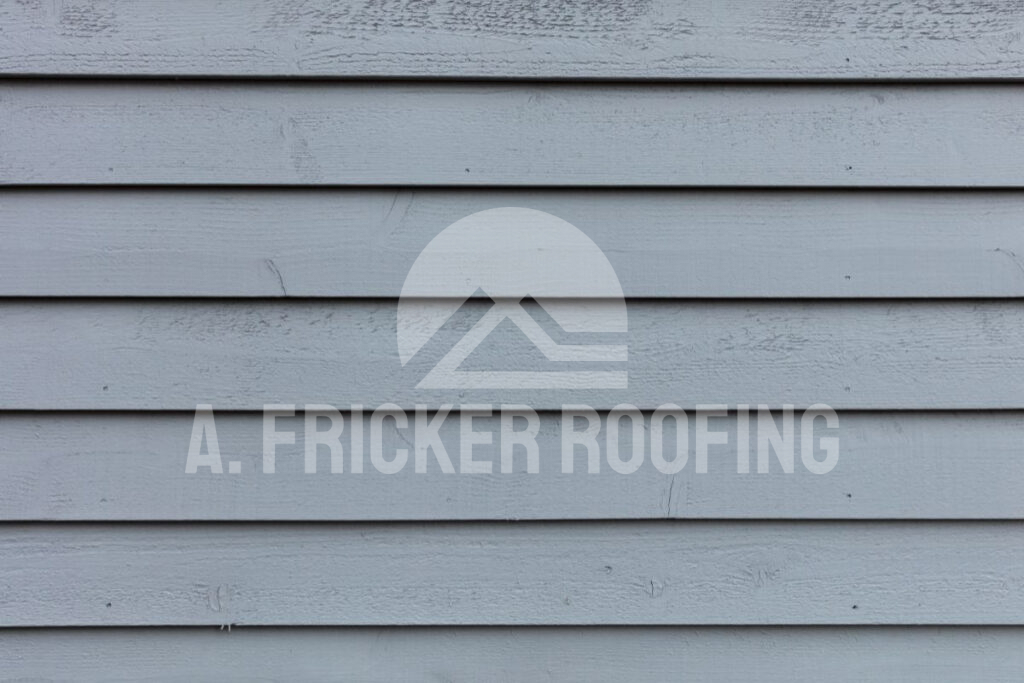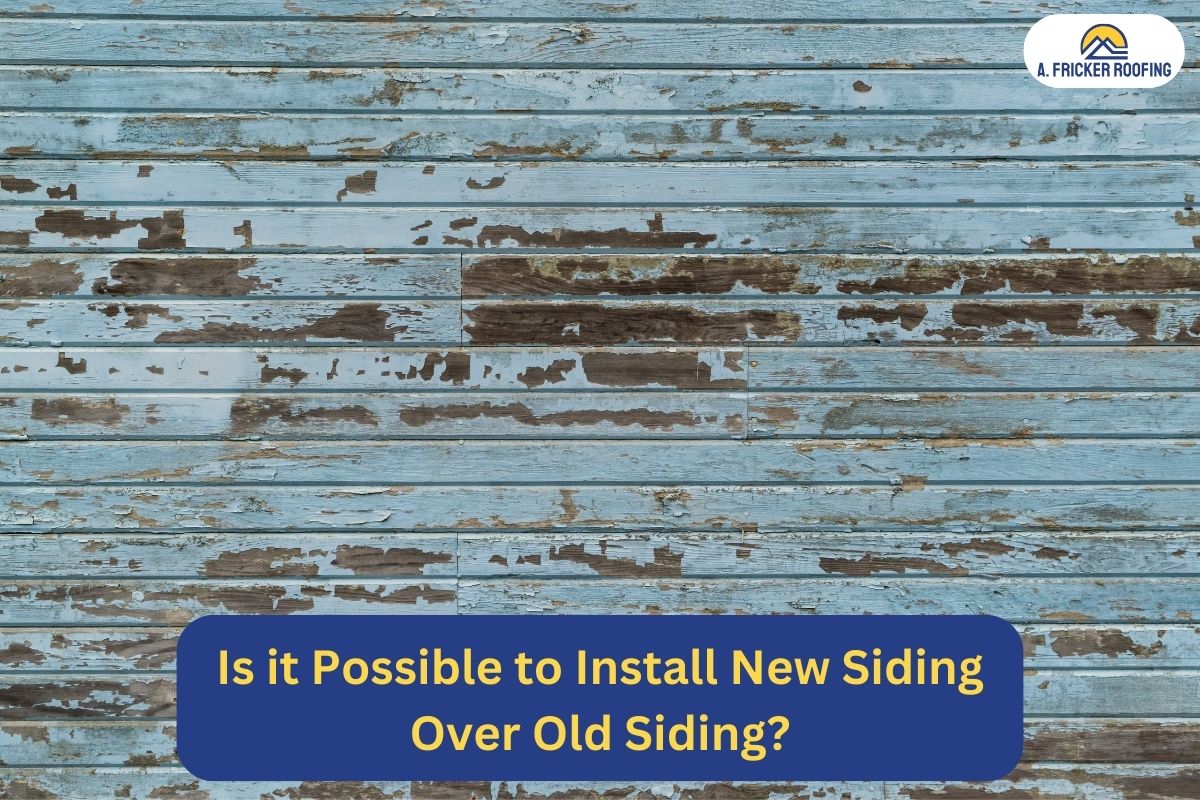If the siding on your home is looking a little worse for wear, you’re probably considering installing something new. But do you have to remove the old siding before installing the new siding? In this blog post, we will answer that question and more.
Can I Install New Siding Over My Old Siding?
The answer to the question, can you install new siding over old siding, heavily depends on the type of siding you have installed. If you have asbestos siding installed on your home, installing new siding over it is recommended, as removing it often results in the material crumbling which releases hazardous materials into the air. Doing this can save you and your family from the potential health risks of asbestos.
However, if you don’t have asbestos siding, it’s best to remove the old materials. While not removing the old siding can save you money in the short term, installing new siding over old siding isn’t usually recommended by professionals.
Why Professionals Don’t Recommend Installing New Siding Over Old Siding
As said, installing new siding over old siding may save you money now, but it may have some negative impacts on your home’s overall integrity, aesthetic appeal, and energy efficiency.
1. Hidden Problems
Overlaying new siding over old provides a cosmetic solution to the exterior but may cover hidden problems. Issues like insect infestations, dry rot, or structural damage may remain unnoticed, leading to more significant challenges in the long run. Therefore, it’s crucial to conduct a thorough inspection and address any underlying issues before installing the new siding.
2. Reduced Visual Appeal
While the goal of installing new siding is often to enhance the visual appeal of your home, overlaying can have the opposite effect. The added thickness of the new siding may alter the proportions of doors, windows, and other architectural features, resulting in an unbalanced and less aesthetically pleasing appearance.
3. Limited Lifespan
Installing new siding over old siding doesn’t address the aging and potential deterioration of the existing material. This can lead to a shorter lifespan for the overall siding system compared to a complete replacement. Over time, the combined layers may experience issues such as warping, buckling, or peeling, necessitating premature repairs or replacement.
4. Trapped Moisture
Overlaying can create a space between the old and new siding layers, potentially trapping moisture. Moisture accumulation can lead to mold growth, wood rot, and other water-related problems. Proper insulation and ventilation are significant measures that can influence the energy efficiency of your home. Therefore, these aspects should be considered when installing new siding on your home or office.
5. Affects Resale Value
Homebuyers are often discerning when it comes to the condition of a property. Overlaying, especially if not done professionally or if it conceals underlying issues, can negatively impact the resale value of your home. Potential buyers may be wary of hidden problems and prefer homes with a well executed and comprehensive siding replacement.
The Cost of Installing New Siding vs. Overlaying the Old Siding
As mentioned above, not removing the old siding may save money now, but will likely cost you more in the long run.
1. Cost to Install New Siding
a) Material Costs
The cost of the siding material itself is a significant factor. The type of siding chosen—whether vinyl, wood, fiber cement, or another material—will impact the overall cost. Premium materials generally come with a higher price tag.
b) Labor Costs
The installation process for new siding involves removing the old siding, preparing the surface, and then installing the new siding. Labor costs vary based on the complexity of the project, the size of the home, and the chosen siding material.
c) Disposal Costs
Removing the old siding generates disposal costs. Disposing of the old material responsibly adds to the overall expense of a complete siding replacement.
d) Additional Costs
Additional costs may include trim, insulation, and any preparatory work needed to address structural issues or create an even surface for the new siding.
According to HomeGuide, the cost of installing new house siding ranges from $4 to $13 per square foot, and old siding removal costs an additional $0.70 to $2.00 per square foot.
2. Cost of Overlaying the Old Siding
a) Material Costs
Overlaying has similar material costs, as new siding still needs to be bought. However, the cost of any additional materials for insulation or leveling should be considered.
b) Labor Costs
While labor costs may be lower for overlaying compared to a complete replacement, the savings may not be as significant as you might think. The additional steps required for preparing the old siding, ensuring proper alignment, and addressing potential issues can still incur significant labor costs.
c) Disposal Costs
Overlaying minimizes disposal costs since the old siding remains in place. This can be a cost saving aspect of this approach.
Why Installing New Siding is Often More Cost Effective
Here are some of the benefits of removing the old siding before installing new:
1. Long Term Advantages
New siding provides a fresh start and addresses any underlying problems in the existing siding. This contributes to the long term durability of the siding system, potentially reducing the need for frequent repairs and premature replacements.
2. Improved Energy Efficiency
Installing new siding allows for the addition of modern insulation materials, improving energy efficiency. While overlaying may provide some benefits, a complete replacement offers a more comprehensive insulation solution. Or for even better results, you can consider installing insulated vinyl siding.
3. Increased Home Value
A complete siding replacement can significantly enhance the curb appeal of your home, increasing its market value. This potential increase in home value can be considered a return on investment.
4. Minimized Maintenance Costs
New siding materials often come with warranties, reducing the likelihood of immediate maintenance costs. Overlaying, on the other hand, may require ongoing maintenance due to potential issues with the old siding.
Signs You Need To Replace Your Siding
Before jumping into installing new siding over old siding, check for these signs to make sure a full replacement is the best option.
1. Visible Damage

Inspect your siding for visible signs of damage, such as cracks, warping, or buckling. These issues not only compromise the appearance of your home but also indicate potential structural problems beneath the siding.
2. Mold or Mildew Growth

Mold or mildew growth on your siding is a clear sign of moisture-related issues. Stains or discoloration may indicate water infiltration, which can lead to further damage and compromise the integrity of the siding.
3. Frequent Maintenance

If you find yourself constantly repainting or repairing your siding, it may be a sign that the material has reached the end of its lifespan. Newer siding options often require less maintenance and provide longer lasting protection.
4. Increased Energy Bills
Old or damaged siding can result in poor insulation, leading to increased energy bills. If you notice a significant rise in heating or cooling costs, it may be due to the compromised efficiency of your siding.
5. Fungus or Dry Rot

Press on your siding gently to check for soft or decayed areas. Fungus and dry rot can compromise the structural integrity of the siding, and these areas may need immediate attention.
Final Thoughts
While the upfront cost of installing new siding may be higher, the long term benefits, durability, and potential increase in home value make it a more cost effective option when compared to overlaying. It’s also important to recognize the signs of damage early to prevent further deterioration of your siding, as this will help you save on repair costs. If you observe any of the above signs indicating the deterioration of your siding, consult with a professional for a comprehensive assessment.
Consult Professionals In Tulsa, OK, For Your Siding Installation or Repair
A. Fricker Roofing and Waterproofing is Tulsa’s leading roofing and home improvement company, and has been serving home and business owners for years. If you notice signs of damage to your siding, it’s time to consult the expert and experienced contractors at the company. Whether you need to install new siding or repair your existing siding, the experts at the company can help. Contact us today at (918) 402-7167 and consult a professional siding installer.

